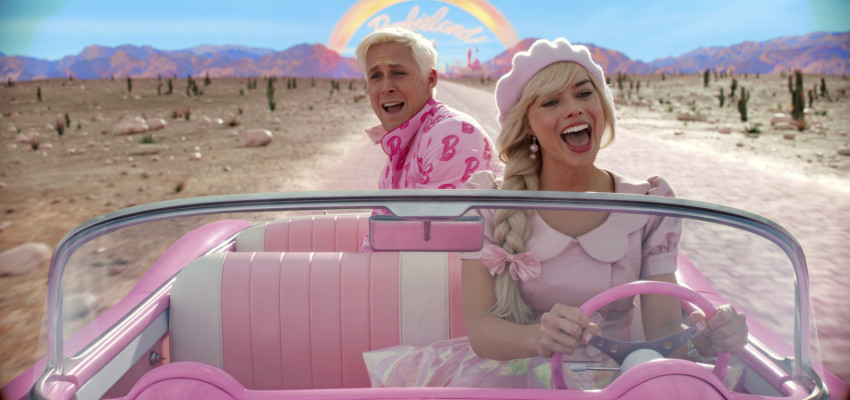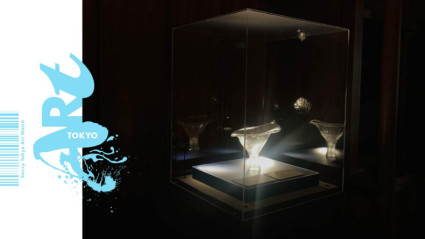As the “Barbie” movie’s worldwide box office passes the billion-dollar mark, and some conservative pundits push back against its popularity with negative hot takes, the phrase “toxic femininity” is back in the news.
On National Public Radio’s “It’s Been a Minute,” panelists discussing “Barbie” speculated about whether toxic femininity exists as the opposite of toxic masculinity. Conservative pundits have been less tentative. A Salon story reporting on conservative coverage of the film noted that the right wing has blasted “Barbie” with charges of toxic femininity. On Fox News, conservative panelist Douglas Murray associated the movie – which he admitted to not having seen – with toxic femininity.
The phrase toxic femininity has become popular with conservatives in recent years. However, it lacks a consistent definition and is often invoked by people with competing and even opposing views about women, men and gender.
As a scholar of gender and communication, I study how language shapes people’s understanding of themselves, others and society. Examining how toxic femininity means different things to different people reveals important insights about gender, power and how language affects our well-being.
Toxic masculinity
First, it’s important to consider the role the predecessor of toxic femininity – “toxic masculinity” – has played in U.S. culture.
Clinical psychologists, academics and feminist advocates have used the phrase to describe a pernicious form of manhood that has produced widespread harm.
Sociologist Michael Flood explains that “the phrase emphasizes the worst aspects of stereotypically masculine attributes,” including “violence, dominance, emotional illiteracy, sexual entitlement, and hostility to femininity.”
The term first appeared in the 1980s but recently has gained prominence in public discussion, cited as a contributing factor to mass shootings, the exploitative behavior exposed by the #MeToo movement, and Donald Trump’s persona and political popularity.
Not all academics agree that using a gendered label to describe structural oppression is helpful. Cultural studies scholar Carol Harrington warns that labeling the outgrowths of patriarchy and misogyny as toxic masculinity shifts responsibility from harmful social systems to the behavior of “‘backward’ and ‘mentally unwell’ men,” making sexism an individual, rather than societal, problem.
Nevertheless, when critics talk about toxic masculinity they are invoking a term that has had a mostly consistent meaning for 30 years. The same cannot be said for toxic femininity.
The many faces of toxic femininity
Toxic femininity is a relatively new phrase that emerged in response to conversations about toxic masculinity.
But people who use the term often have very different motivations for doing so – from altruistic concern about the harms of sexism to indignation over men’s ostensibly dwindling power in society. Given these diverse motivations, people often employ the phrase to mean wildly different things.
Psychologists such as Meaghan Rice see toxic femininity as the inverse of toxic masculinity – a constellation of characteristics like meekness, emotionalism, passivity and self-sacrifice. Writing for “Psychology Today,” psychologist Ritch C. Savin-Williams describes toxic femininity as “internalized misogyny” that encourages women to ignore their “mental or physical needs to sustain those around them.”
In other words, toxic femininity is what many people think of as “stereotypical femininity” and is a product of patriarchal gender norms. In this formulation, toxic masculinity and toxic femininity are both fueled by sexism, and each erodes human thriving.
A different perspective regards toxic femininity not as a stereotypical notion of gendered weakness but as an inappropriate demonstration of female strength, cunning or privilege. Psychologists Shoba Sreenivasan and Linda E. Weinberger ascribe the trait to professional women who are “hostile to nurturance and cooperation, opting instead for aggression and backstabbing to get ahead.”
Similarly, organizational psychologist Nancy Doyle links “toxic femininity at work” to the infamous “Karen” meme, which refers to white women who use their gender and whiteness to manipulate or dominate others. This version presents toxic femininity as a woman’s version of the domineering individualism that drives toxic masculinity.
The conservative pundits arrayed against both “Barbie” and feminism, more broadly, are promoting a third definition of toxic femininity. Cultural studies scholar Hannah McCann explains that many men’s rights activists deploy the term as a rebuff of assertions about toxic masculinity, arguing that men are victimized by “toxic” women – not the other way around.
Conservative pundits like Matt Walsh and author Jeff Minick invoke toxic femininity to oppose feminism writ large. Right-wing commentator Candace Owens tweeted, “Terms like ‘toxic masculinity’, were created by toxic females.”
Carrie Gress, author of “The Anti-Mary Exposed: Rescuing the Culture from Toxic Femininity,” takes this perspective to the extreme, asserting that the pro-choice radical feminism of the 1960s ushered in a cultural and spiritual transformation that “led to the toxic femininity that has destroyed the lives of countless men, women and children.”
The right-wing iteration of toxic femininity attempts to neutralize the argument that patriarchy systematically disadvantages women and others who fail to fit traditional gender norms. Toxic femininity is regarded as equally dangerous to men – or even more – as toxic masculinity is to women.
Beyond a toxic gender binary
In her examination of popular discussions of toxic masculinity and femininity, McCann argues that what makes gender ideology toxic is rigidity – adherence to an inflexible gender binary. Gender norms are scripts that direct people to behave in ways that are consistent with one group’s ideas about what it means to be a woman or a man.
Of course, these scripts leave many people feeling uncomfortably constrained – not only the men and women who buck tradition, but also nonbinary, transgender and other people whose existence demonstrates that a gender binary is too simplistic to account for the fullness of human experience.
In the end, the movie “Barbie” recognizes the toxicities of both the matriarchal and patriarchal versions of Barbieland. Director Greta Gerwig’s happy ending requires Margot Robbie’s stereotypical Barbie to leave Barbieland for the real world, where she can forge a unique, less toxic, identity.
Karrin Vasby Anderson is Professor of Communication Studies at Colorado State University, where she teaches courses in rhetoric, political communication, and gender and communication.
The Conversation is an independent and nonprofit source of news, analysis and commentary from academic experts. The Conversation is wholly responsible for the content.
© The Conversation















10 Comments
Login to comment
Thuban
Well then if gender is merely a social construct, how can someone be born the wrong gender?
falseflagsteve
I would imagine that most people are tired of this silly wordplay by now, I know I am.
aaronagstring
And yet it’s notable that every time there’s an article like this, here you are reading and commenting. Why bother if you are “tired of this silly wordplay”?
As for the movie in question, I personally won’t go to see it, as it has little interest for me, but it’s great to see it so popular and annoying so many in equal measure.
Jimizo
I think a lot of the idiot right ( there are sensible ones ) are mourning the absolute hiding ‘Go woke, go broke’ has taken here.
Do explain. You can link to a rightwing North American podcast if it saves time.
CuteUsagi
The last line in the movie says it all and explains it.
winston
Gender toxicity has infected the news , social media and movies , childrens toys , cartoons , games etc etc
winston
An idea of what it means to be a man or woman is just an idea or fantasy construct as its different for different people and cultures
the obvious anatomically correct wedding tackle one is biologically born with physically defines gender.
Otherwise your free to imagine whatever gender you want to be in the privacy of your own head
No surgery or hormone replacement can change your gender after your born.
Not yet anyway
bass4funk
Good question, but the confused left never seems to have a concrete answer
Roy Sophveason
Well done. That is a very secure, because very random, password.
Jeremiah
“feminism
noun
Definition: a belief that a woman needs to be a man in order to be a woman.”